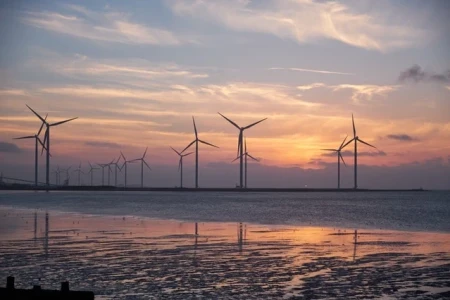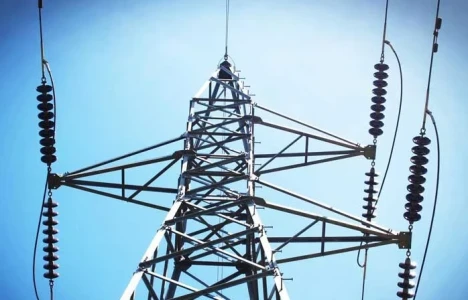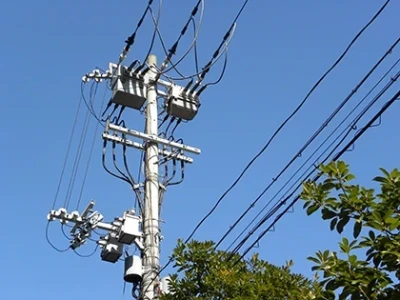ISO New England Issues RFP to Integrate Maine Wind Power

ISO New England, the regional grid operator, has launched a Request for Proposals (RFP) aimed at enhancing the region’s transmission infrastructure to support the anticipated influx of wind energy from northern Maine. The new initiative, announced on March 31, 2025, seeks to address long-term transmission needs and improve power flow between northern Maine, where large-scale wind farms are expected to be developed, and the demand centers in southern New England.
The RFP, developed in collaboration with the New England States Committee on Electricity (NESCOE), is designed to facilitate the integration of up to 1,200 MW of land-based wind generation into the regional grid. The goal is to upgrade key transmission interfaces, including those between Maine and New Hampshire, as well as expand infrastructure in areas like Pittsfield, Maine, which will accommodate new wind generation projects.
This RFP marks a significant milestone in New England's push toward cleaner energy. Massachusetts Governor Maura Healey expressed strong support for the process, calling it a long-awaited solution to the region’s grid constraints and a key step toward integrating affordable, onshore wind resources. Healey emphasized the importance of collaboration between the ISO, NESCOE, and regional stakeholders to find innovative and cost-effective solutions to New England's pressing energy challenges.
Under the proposal, submissions will be evaluated based on their ability to enhance grid reliability and deliver benefits to the region. A strong preference will be given to projects that can be completed by December 31, 2035, aligning with New England’s broader energy transition goals. The selected transmission solutions will be crucial in allowing the region to harness its vast offshore and onshore wind resources while meeting the growing demand for clean, reliable energy.
This RFP is part of a broader effort to modernize the energy infrastructure across New England, which has faced challenges in integrating renewable energy due to aging transmission networks. By opening up transmission opportunities for new wind resources, ISO New England aims to support the region’s climate goals and ensure that the grid can accommodate future renewable energy capacity.
Strategic Implications for New England's Energy Future
The RFP is not only about facilitating wind energy but also about improving the overall efficiency of the power grid in New England. Historically, the region has struggled with bottlenecks and transmission congestion, particularly between the northern and southern parts of the region. Upgrades to these transmission lines are expected to alleviate these issues, providing a more robust grid that can handle the increasing flow of renewable energy.
The expansion of wind generation capacity, particularly in Maine, is seen as a key component of New England's renewable energy strategy. With wind power playing an increasingly significant role in meeting the region’s energy demands, the ability to transmit this power efficiently to urban centers like Boston and Hartford is critical. This initiative represents a concrete step in ensuring that the region is prepared for future energy needs while reducing its reliance on fossil fuels.
Moreover, the RFP aligns with New England's broader goals of achieving net-zero emissions by 2050. By enabling the integration of large-scale renewable energy sources, the region is taking significant strides toward decarbonizing its energy grid. The inclusion of wind generation from Maine is particularly important, as the state is poised to become a major player in the renewable energy sector, with numerous wind projects already in development.
Looking Ahead: Challenges and Opportunities
While the RFP represents a major step forward, challenges remain in ensuring that the proposed transmission upgrades are completed on time and within budget. The regulatory process, permitting requirements, and potential opposition from local communities and environmental groups could delay project timelines. However, the regional support and the collaboration between various stakeholders provide a solid foundation for overcoming these challenges.
As the process unfolds, ISO New England will assess proposals and make a final decision on the preferred transmission solution by September 2026. This will provide the necessary framework for the development of transmission infrastructure capable of supporting New England's wind energy future.
ISO New England’s issuance of the transmission RFP is a critical move to unlock the region’s renewable energy potential. The integration of wind power from northern Maine into the grid represents a significant step toward achieving a clean, reliable, and sustainable energy future for the region. The success of this initiative will depend on the collaboration of energy developers, grid operators, and policymakers to create a transmission network that can meet the challenges of an increasingly renewable-powered grid.







